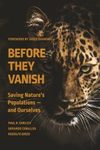![The Horse in the City The Horse in the City]()
Click to have a closer look
About this book
Contents
Customer reviews
Biography
Related titles
About this book
The nineteenth century was the golden age of the horse. In urban America, the indispensable horse provided the power for not only vehicles that moved freight, transported passengers, and fought fires but also equipment in breweries, mills, foundries, and machine shops.
Clay McShane and Joel A. Tarr, prominent scholars of American urban life, here explore the critical role that the horse played in the growing nineteenth-century metropolis. Using such diverse sources as veterinary manuals, stable periodicals, teamster magazines, city newspapers, and agricultural yearbooks, they examine how the horses were housed and fed and how workers bred, trained, marketed, and employed their four-legged assets. Not omitting the problems of waste removal and corpse disposal, they touch on the municipal challenges of maintaining a safe and productive living environment for both horses and people and the rise of organizations like the American Society for the Prevention of Cruelty to Animals.
In addition to providing an insightful account of life and work in nineteenth-century urban America, The Horse in the City brings us to a richer understanding of how the animal fared in this unnatural and presumably uncomfortable setting.
Contents
Preface
Introduction: Thinking about Horses
1. Markets: The Urban Horse as a Commodity
2. Regulation: Controlling Horses and Their Humans
3. Powering Urban Transit
4. The Horse and Leisure: Serving the Needs of Different Urban Social Groups
5. Stables and the Built Environment
6. Nutrition: Feeding the Urban Horse
7. Health: Equine Disease and Mortality
8. The Decline and Persistence of the Urban Horse
Epilogue: The Horse, the Car, and the City
Notes
Index
Customer Reviews
Biography
Clay McShane teaches history at Northeastern University. Joel A. Tarr is the Richard S. Caliguiri University Professor at Carnegie Mellon University. In 2008, he received the Leonardo da Vinci Medal for lifetime achievement from the Society for the History of Technology.
By: Clay McShane(Author), Joel A Tarr(Author)
280 pages, 42 b/w illustrations
"An outstanding study of a neglected topic."
– New England Quarterly
"In recent decades, such ethnic groups as Italians, African-Americans and Chinese have rightfully demanded recognition for their share in building America in the days of the Industrial Revolution. Horses clearly did as much but had no one to speak in their behalf. Now they do."
– History Wire
"Overall, McShane and Tarr have written an outstanding and highly creative book. It should interest historians of cities, the environment, economics and animals."
– Journal of Economic History
"Presents a rich and complex picture of nineteenth-century urban life. McShane and Tarr have given us a book that is simultaneously an urban social history, a social history of a technology, and an environmental history."
– Technology and Culture
"The growth and development of the 19th-century city would have been vastly different without the horse, even though the horse's role was taken for granted by city residents and ignored by historians."
– Choice
"Valuable contribution not only to urban history but also to nineteeth-century economic, business, environmental, and social history."
– Journal of Interdisciplinary History
"A brilliant account of an incredibly important but understudied topic."
– John H. Hepp, IV – American Historical Review
"McShane and Tarr's book, mercifully free of academic argot, a pleasure to read and full of enjoyable and surprising revelations, is welcome. And, if you'll forgive the metaphor, it covers the ground well."
– Paul Laxton – Urban History
"Their work will no doubt encourage many scholars to reevaluate what they know about the physical formation of U.S. cities and what was going on in them."
– Robert Buerglener – American Quarterly
"A deeply researched exploration of the intimate relationships among horses, humans, urbanization, industrialization, and reform."
– George B. Ellenberg – Agricultural History
"Taken together the horse and the growth of the city fill an interesting and useful history of America. This ride is highly recommended."
– Ray B. Browne – Journal of American Culture
"A valuable addition to the growing discussion of animals in history [...] the reader is left with a greater appreciation of the horse as an active participant in American history."
– Marta Knight – Economic History Review
"It should be required reading for anyone interested in the environmental history of urban life in the eighteenth and nineteenth centuries."
– Brian Black – Environmental History
"A fascinating story of the 'Gelded' Age."
– D. Scott Molloy – Journal of American History
"A fascinating account of the role of horses in shaping the economy and society of American cities during the nineteenth century that contributes greatly to the fields of urban history, environmental history, and the history of human-animal relationships. "
– Susan D. Jones, author of Valuing Animals
"In this careful and richly textured book, Clay McShane and Joel Tarr have shown us how these beasts of burden helped create the modern metropolis and then disappeared from the city streets."
– Kenneth T. Jackson, Columbia University
"This innovative and fascinating book goes to the heart of new research that connects the human and animal worlds as never before. In presenting the horse as a 'living machine', McShane and Tarr help us rethink how cities were built and how they functioned in the past."
– Martin V. Melosi, University of Houston, author of The Sanitary City and Effluent America



































